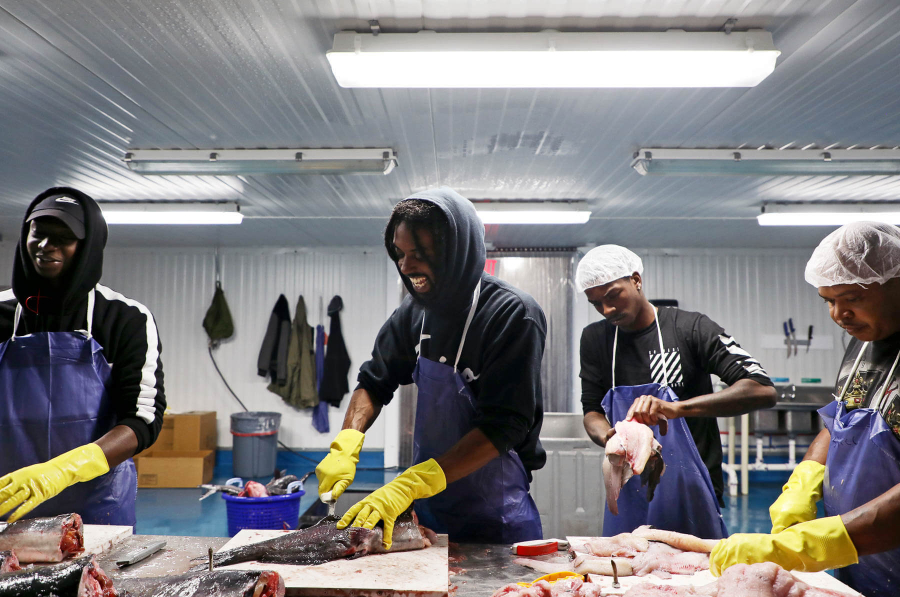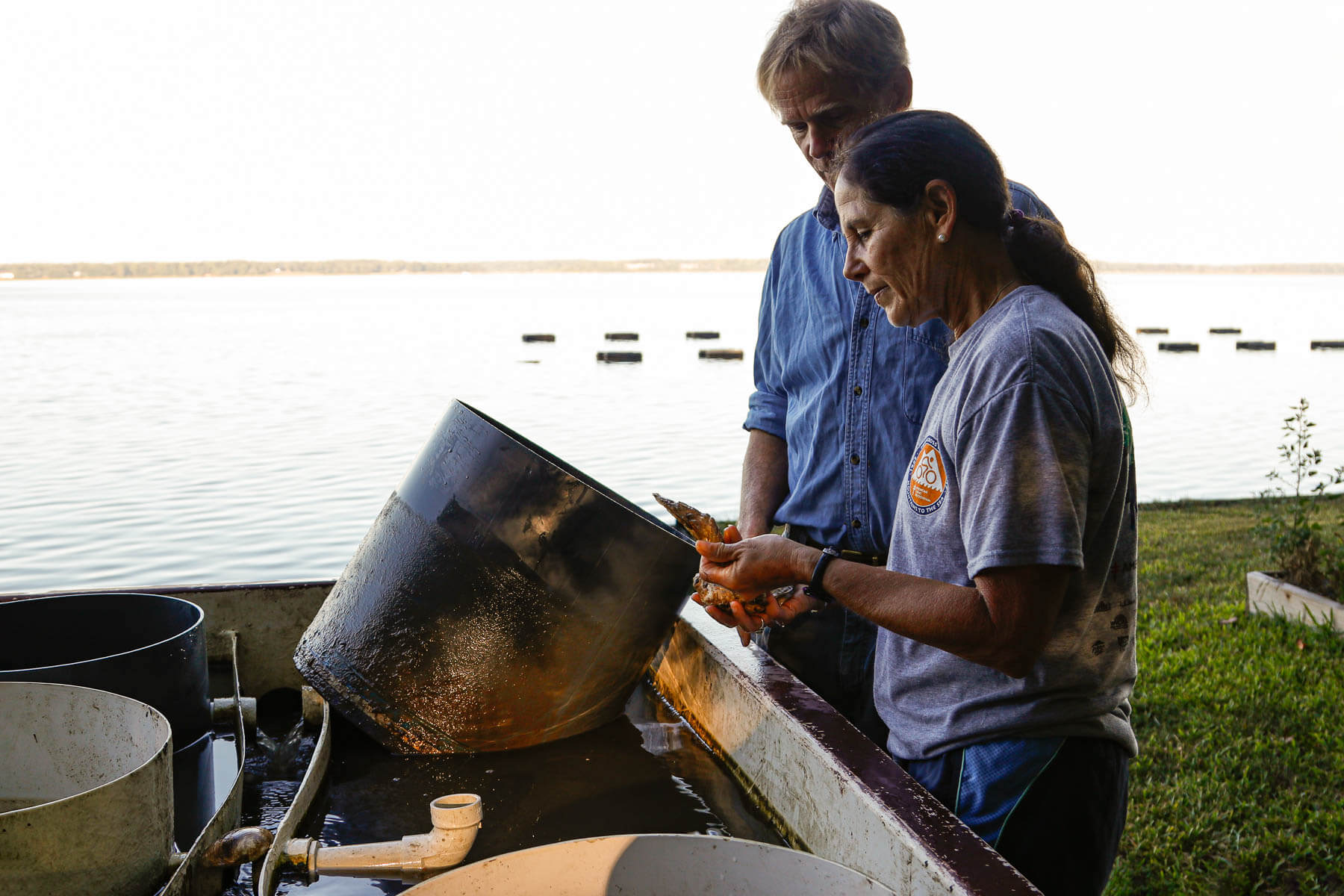Seafood businesses go online to stay afloat

Harvesting crabs, growing oysters and delivering fresh seafood to customers demands a unique set of skills. Now, seafood businesses weathering the COVID-19 pandemic are also relying on web design, e-commerce and social media to help keep their doors open.
For the time being, the seafood business model has changed due to each state’s respective shutdown orders. Wholesalers that once sold primarily to restaurants are now selling directly to the public, while the restaurants that have remained open are now doing carry-out only. In order to adapt, both camps are having to think outside the box and utilize online marketing more than ever.
L.D. Amory Seafood & Co. in Hampton, Virginia, is one of such businesses. Unable to sell its fish to restaurants, the company is now selling as much as it can to the public. They set up their first-ever Facebook page at the end of March, announcing curbside pickup for wholesale fish at a “GREATLY REDUCED price!” Since then, the business has made regular updates on the platform, holding photo contests and promoting “holiday packages” to spur sales. Two months later, over 2,000 people now follow them on Facebook.
In Cape Charles, Virginia, Cherrystone Aqua-farms is entering new territory as well. Soon after restaurants closed, the business completely overhauled its website to focus on oyster and clam home delivery, coining the tagline "From boat to doorstep." The business is taking things a step further by running targeted advertisements on Facebook and Instagram for its oysters, clams and merchandise. But all of this is only a small part of what they've had to do to make direct-to-consumer sales work—shipping logistics, state taxation laws, packaging and a host of other issues also had to be figured out.
"While it would be unrealistic to think we could immediately recover from the drastic decrease in wholesale orders due to COVID-19 and associated restaurant closures, we were pleasantly surprised with the response we received after going live with our 'boat to doorstep' model," said Caitlin Hart, Director of Marketing for Cherrystone Aqua-farms.

“The power of social media is evident here,” said Marcia Berman, who owns Cappahosic Oyster Company in Gloucester, Virginia, alongside her husband Mark Vann. Marcia and Mark are also using Facebook to adapt to the new model, relying on friends and colleagues to tap into their social media networks. With fewer resources than a bigger business, the couple is selling oysters straight from the farm or making deliveries themselves instead of shipping. The challenge is to find new communities to sell to, as the desire to eat a particular seafood rises and falls. While it’s not sustainable, the couple said that it is helping in the short term.
One organization stepping in to help seafood businesses is Virginia Sea Grant. Working with university partners, they are helping to spread the word about the businesses now selling directly to the public, as well as sharing useful resources with business owners. Recently, the organization promoted a free “Virginia Seafood Online Business Webinar” held by Gloucester native and e-commerce expert Kimberly Reuter. The organization also keeps an updated COVID-19 resource page with information on applying for loans, links to online sales platforms and other useful information.
“Virginia’s watermen are a resilient group, and although it’s been a struggle for most, they are doing the best they can to adapt quickly to a changing market,” said Aileen Devlin, a digital storyteller who has visited several local seafood producers for Virginia Sea Grant. “Once we get over this hump, Virginia's seafood industry will at least have taught themselves how to use valuable new resources to grow and maintain their businesses.”
.jpg)
The transition to online marketing has come more naturally to restaurants, who unlike wholesale businesses, tend to already have strong community ties. One example is Dylan’s Oyster Cellar, a popular Baltimore eatery run by husband and wife Irene and Dylan Salmon. After Maryland closed restaurants and bars to dine-in customers, the couple decided to sell bags of oysters one day a week from their two longest-standing providers, Johnson Bay Oyster Company and Great Wicomico Oyster Company. To help fill the gap in business, Dylan’s also offers curbside pickup for less perishable items such as canned anchovies, salt cod cakes and meal kits that come with cooking directions. On social media, the restaurant fans the flame for over 8,300 Instagram followers with new offerings such as to-go cocktails and Mother’s Day gift bags, as well as home cooking tutorials and live “Shucking School” videos.
“We’ve had to rethink what a restaurant's role is now that we’re not hosting guests,” said Dylan. Despite the “heartbreak” of having to lose some staff, he is seeing a silver-lining in connecting with the community and teaching valuable skills.
Despite some success, online sales are only a means of keeping businesses afloat until restaurants fully re-open. Last month, Congress set aside $300 million to help the U.S. seafood industry. The Paycheck Protection Program and other small business loans are helping businesses pay employees, though the support is not always enough to retain a full staff. At Dylan’s, for example, the program has only allowed them to pay cooks, shuckers and management while bartenders, servers and other staff had to be laid off. Cappahosic Oyster Company used money from the CARES Act to buy more cages for the farm’s surplus oysters that would have been sent to restaurants. These oysters continue to grow, but the fear is that they will get too big for their intended market.
For Chesapeake Bay seafood companies, long nights and difficult conversations with employees have become commonplace during the COVID-19 pandemic. The aim now is to make it through the summer with both public and government support. Sitting down to a pile of blue crabs or a plate of oysters with cocktail sauce are deep-seated Chesapeake Bay pastimes, and businesses are just as hungry as their customers to get back to the way things were.
As Dylan Salmon put it, “I’m ready to get back to shucking.”

Comments
Great article and very well written!
The Amory seafood is great! Sam Rust has good deals too. We bought the 10# flounder pack and are loving it!
Thank you!
Your comment has been received. Before it can be published, the comment will be reviewed by our team to ensure it adheres with our rules of engagement.
Back to recent stories